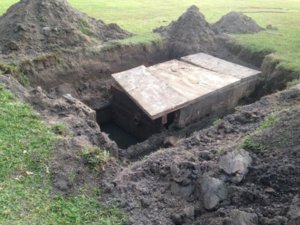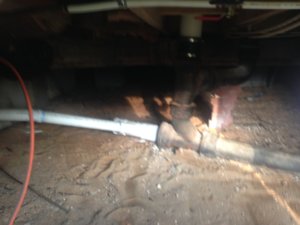i developed a sink hole next to my septic tank. Started digging and had it pumped. It is a old block tank. The issue is the block at the water line was corroding. So the plan for now is to patch the holes with concrete. Looking to get a few more years out of it.
The question I have is that there is a about a foot of dirt at the bottom of it. Is it worth my time to dig the majority of it out? Or just patch it up and wait till it all caves in? The tank was just pumped Saturday. Only shower water in it now. No poop water.
The question I have is that there is a about a foot of dirt at the bottom of it. Is it worth my time to dig the majority of it out? Or just patch it up and wait till it all caves in? The tank was just pumped Saturday. Only shower water in it now. No poop water.















